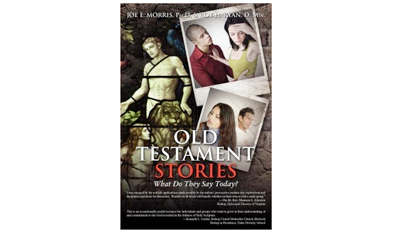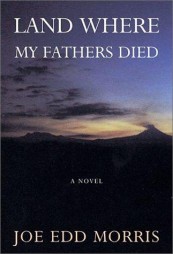Dr. Roy Ryan and I are pleased to announce that New Testament Stories: What Do They Say Today, the companion book to Old Testament Stories: What Do They Say Today?, will be published mid-January by CrossLink. CrossLink published the Old Testament book and we are glad to have their creative touch on this new book. The Old Testament book has just about sold out and is in line, we hope, for a second printing.
Below is the Introduction to New Testament Stories: What Do They Say Today?
Introduction
Following the success of our first joint effort, Old Testament Stories: What Do They Say Today, several of our readers suggested a follow up. We gave it some thought. We decided not to reinvent the wheel. The New Testament developed from the Old Testament. Many stories, themes and ideas in the Old Testament have their counterparts in the New Testament. Our follow up was an easy decision. We continued with the theme of relevancy and attached it to the Old Testament’s companion: New Testament Stories: What Do They Say Today?
Before we began, we were reminded of the famous comment by William Faulkner that he enjoyed reading the Old Testament because it is about people; the New Testament is about ideas. With an abundance of respect, we wonder how much of the New Testament he read. We made a list of over a hundred stories in the New Testament. They tend to stop with and Acts where Paul picks up in Romans. From that point, Faulkner is correct. Theology and ethics dominate. We wae interested in stories that occur, not stories in parables or sayings. We are also interested in stories about ordinary people. With the exception of Nicodemus and the Rich Young Ruler, almost all of the stories in this book are about ordinary people, lowly, salt of the earth types who saw what others could not see. Nicodemus eventually sees the light; the rich young ruler does not.
To ensure some objectivity in our choice of stories, from the hundred plus stories, we each picked our top fifteen, then shared our list. We picked eight stories in common. From the remaining fourteen, we agreed upon four, rounding out our number to twelve, a good biblical number. Nine chapters involve events surrounding Jesus and the lasdt three chapters focus on Paul: his conversion, Philemon, and the Jerusalem Conference. With one exception, each chapter focuses on a single event. Chapter 6, “Jesus the Doctor,” incorporates three different healing stories. Of the Jesus chapters, three involve healings.
We chose stories based on criteria of significance and popularity, but also stories with less well-known aspects. For example, most are familiar with the story of Nicodemus’ visit with Jesus at night and Jesus‘ statement that one must be born again in order “to see the kingdom of God.” The statement is a centerpiece of much of contemporary evangelism. Most may not know, however, that Nicodemus played an important role in the defense of Jesus with the Sanhedrin and in Jesus‘ burial. The Jerusalem Conference was an important meeting between Peter, Paul and other early church leaders. But most may not know that without those agreements, today’s Christians might be Jews. Everyone knows the stories of the Miracle at Cana, Jesus’ cleansing of the Temple, and Nicodemus. But are they aware these stories, all in the John’s gospel, are connected and intricately linked to the key themes in the book’s prologue that continue throughout the work. Many are aware that
Jesus’ healing of the blind, lepers and demon-possessed were astonishing feats. They may not know that each event was a messianic gesture.
After reading all of Jesus healing stories, we decided to pick two from the Gospel of John. We chose them because they are part of a composite in John’s early chapters, set his theological tone and maintain his persistent themes. They are also rich in content with some interesting details and aspects. We chose Jesus’ healing of the demoniac in the first chapter of Mark for similar reasons. Just as the Wedding at Cana is John’s first miracle, setting some of his key theological themes, so is Mark’s first miracle in his gospel.
Many of the stories of Jesus are about his miracles. In Mark’s gospel, in fact, one third of the material is devoted to miracles. we feel we should say a word about them. Many today think of Jesus as a type of magician who waves a hand or speaks and people are cured. But Jesus’ ministry is first and foremost one of preaching and teaching. He rigorously condemns those who come looking for miracles. His main purpose is to announce the kingdom of God. In Mark and other evangelists, miracles do not produce faith, faith produces miracles.
Regarding stories about Paul, in order to get the full context, we offer these recommendations. For the chapter on Philemon, read the entire letter. For the chapters on the Jerusalem Conference and Paul’s conversion, read all of Acts through chapter15 and the entire book of Galatians.
The structure of each story basically, with some variance, follow the outline of a short story: character, event, change. In some cases, there is a story beneath the story.
In the Gospel of John, for example, there are always two aspects or levels in each story: the simple surface story itself and the second, deeper level of meaning. The scenes within passages are presented as unfolding drama in a contemporary voice and narrative present tense, infusing them with a sense of immediacy and relevancy.
Unless otherwise stated, all scripture is from the New International Version translation version of the Bible. Because most of us are creatures of habit, another issue that generates some concern among Christians is the shift in dividing time from B. C. and A. D. to B. C. E. (Before the Common Era) and C. E. (Common Era). We Christians must realize, and rally understanding, that for those of other faiths—Jews, Muslims, Buddhists, etc.—Jesus is not Lord and the abbreviations which work well for us, lack meaning and relevance for them. For this reason, most scholars have begun using the more inclusive abbreviations. Therefore “Common Era” means common to all people of all faiths who use the calendar of Western civilization and “B.C.E.” means “Before the Common Era.” The newer trend will be followed in this book.
The title of this book is New Testament Stories: What Do They Say Today? As we wrote, we kept asking, checking, ourselves. Are we falling into the same old trap many preachers fall into? Are we framing the same old message in its same old context with the same old formulas that people hear over and over. Are we giving them a warmed over law? Or are we, from the stories original context, reframing them in the terms and images of our time? Are we taking those old formulas handed down through the ages and giving them a cutting edge so they speak anew? Over these next twelve chapters, you, the reader, will be the judge.










